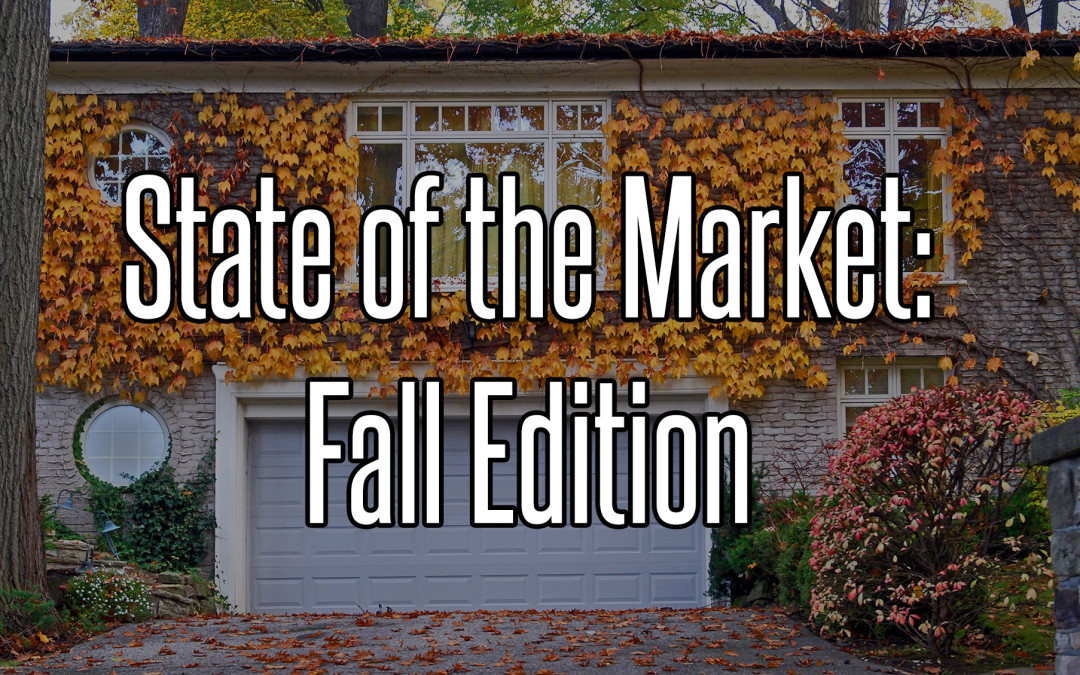
by rtdosen | Oct 27, 2015 | Ryan Dosen Real Estate Articles
Autonomous Vehicles and the Impact on Real Estate By Ryan Dosen Most people don’t know it, but autonomous vehicles will start to be widely used in just a few years. These driverless vehicles will cost less money to operate, result in fewer accidents, and may affect home purchasing decisions as commutes become less painful. The impact on real estate will be gradual, but it will likely be positive for homeowners in Chester and Delaware County. The Driverless Revolution “The majority of people I talk to have no idea they’re coming so soon.” This is the latest regarding driverless vehicles from Lauren Isaac, Manager of Transportation Sustainability at engineering and planning firm Parsons Brinkerhoff. Based upon what Isaac and other experts foresee, the rollout of self-driving vehicles will occur gradually, probably over the next 15 years or so. Isaac, who recently spoke on the topic at the National Shared Mobility Summit in Chicago, believes that the revolution will start as freight hauling companies make the move to reduce the costs, inefficiencies, and liabilities associated with human drivers. Jonathan Walker of the Rocky Mountain Institute (RMI), a nonprofit research and educational foundation focused on fostering “efficient and sustainable use of resources,” also spoke at the Summit. Walker sees “robo-taxis” going main stream very soon. He says that “in three years we’re going to see some kind of automated taxi service, probably in the Bay Area, maybe in Austin.” Walker and Greg Rucks of RMI wrote an article earlier this year entitled “5 Steps to an Urban Transportation Revolution.” In it, Walker and Rucks say that “a big part of the...

by rtdosen | Oct 23, 2015 | Ryan Dosen Real Estate Articles
Housing Market Expansion Expected Through 2017 By Ryan Dosen The real estate market should continue its expansion at least through 2017. This is the latest bit of good news from the Urban Land Institute (ULI) Center for Capital Markets and Real Estate. Though “less bullish” than its last forecast in April, ULI’s most recent three-year economic forecast calls for “healthy and fairly steady” real estate market growth. Urban Land Institute’s Survey ULI is an independent global nonprofit with a mission “to provide leadership in the responsible use of land and in creating and sustaining thriving communities worldwide.” ULI has more than 36,000 members worldwide, “representing the entire spectrum of the land use and development disciplines.” To determine its three-year forecast for the real estate market, ULI polled real estate economists and analysts from 36 of the country’s leading real estate investment, advisory, and research firms. William Maher, ULI leader and director of North American strategy for LaSalle Investment Management in Baltimore, says that “the latest Consensus Forecast has picked up on recent growth concerns and stock market corrections around the world.” However, despite the fact that “global economies and capital markets are increasingly inter-related,” Maher says that “the US economy and real estate markets are in much better shape than most other countries.” Maher observes that “the vast majority of indicators in the forecast indicate favorable economic and capital markets in the U.S., as well as moderately strong real estate fundamentals and investment returns.” Therefore, ULI is calling for continued expansion in the American housing market for at least the next three years. In keeping with its call for...

by rtdosen | Oct 9, 2015 | Ryan Dosen Real Estate Articles
Top 5 Things to Consider When Building a New Home By Ryan Dosen Buyers in today’s market have been getting frustrated. Despite the fact that inventory levels are close to last year’s levels, it seems like there’s a shortage of quality homes on the market. Inventories are actually down slightly and the pace of home sales in Chester County has increased (Suburban West Realtors Association reports that year-to-date home settlements are up 15.2 percent). With more buyers buying and fewer homes for sale, we’re still seeing attractive, accurately-priced homes flying off the shelves. As a result, many of these frustrated buyers will turn to new construction, choosing to pay more for the chance to get exactly what they want. However, rather than etching their wants in stone, these buyers would be wise to take a few notes from the people in the business of new construction. To learn more about what new construction buyers need to know, I sat down with Scott Megill, homebuilder and co-owner of multi-generational, award-winning luxury homebuilder Megill Homes of Chadds Ford, PA. 1 – Maximize Structural Spaces According to Megill, one of the most important things to consider when designing a new home is maximizing the home’s structural spaces. Once these spaces are set and built out, it is very difficult to change them or add to them later in a cost-effective manner. Megill says that “when designing your home, you want to pay special attention to the rooms that you will spend the most amount of time in. Design these rooms with enough area so that you will be able to enjoy...

by rtdosen | Oct 2, 2015 | Ryan Dosen Real Estate Articles
State of the Market: Fall Edition By Ryan Dosen Fall is here. Welcome are the cooler temperatures and beautiful colors, as well as the typical flurry of real estate activity. People have returned from summer vacation, kids are back in school, and many will try to close transactions before year-end and the holidays. In general, the market seems to be following a similar path this year, at a noticeably faster pace. Pending Home Sales Remain Up Year-Over-Year The National Association of Realtors (NAR) reports that “pending home sales retreated in August but remained at a healthy level of activity and have now risen year-over-year for 12 consecutive months.” NAR’s Pending Home Sales Index is also up 6.1% year-over-year. Pending sales are an important indicator for the real estate market, as they represent the number of transactions that are under contract, but not yet closed. A measure of closed transactions would show us where the market is today. However, most are more concerned with where the market is headed. Pending transactions represent closings that will, for the most part, occur in the next couple of months—providing a decent indicator of the real estate market’s health in the near future. Lawrence Yun, Chief Economist for NAR, says that “pending sales have leveled off since mid-summer, with buyers being bounded by rising prices and few available and affordable properties within their budget…. Even with existing-housing supply barely budging all summer and no relief coming from new construction, contract activity is still higher than earlier this year and a year ago.” In Chester County, housing supply has dipped about 7 percent since...

by rtdosen | Oct 2, 2015 | Ryan Dosen Real Estate Articles
TRID Clears the Air on Home Loan & Settlement Terms By Ryan Dosen New forms, new procedures, and new requirements are coming for real estate loans and settlements by way of the TILA-RESPA Integrated Disclosure (TRID) rule. For loan applications taken on or after October 3, 2015, Good Faith Estimates go the way of the dinosaur and lenders will have heightened requirements for getting you to the closing table. For consumers, the changes should largely be positive, unless you find yourself working with a lender or agent that is not prepared for the changes. Changes to Loan Paperwork Currently, lenders are required to provide their clients with Good Faith Estimates (GFEs) and Truth-in-Lending Act disclosures (TILAs). The GFE provides the consumer with lender, sales price, loan amount, interest rate, and type of loan information. The TILA provides the consumer with the loan’s interest rate, along with information about fees, such as loan origination fees, underwriting and processing fees, and other costs associated with the loan. Starting on October 3, the GFE and TILA are replaced with a 3-page Loan Estimate form. The new form provides the consumer with much of the same information, but in a format that is supposed to be more easily digestible. Changes to HUD-1 Currently, the HUD-1 Settlement Statement is the form that is signed at closing, summarizing all payments being made pursuant to a real estate transaction. The HUD-1 and final TILA forms are being replaced with a new 5-page Closing Disclosure form. In addition to providing a breakdown of financials, this form is used to disclose many of the terms and...







Recent Comments